
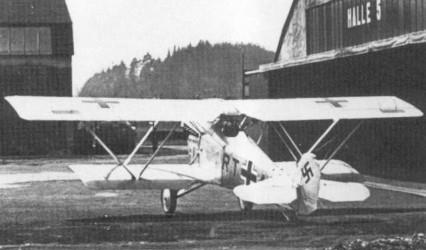
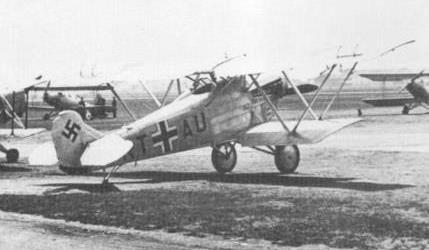

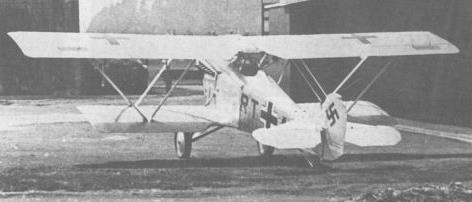
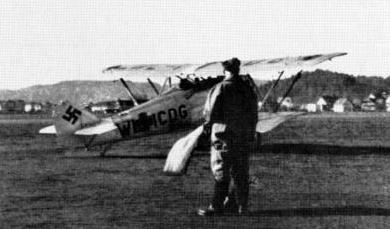
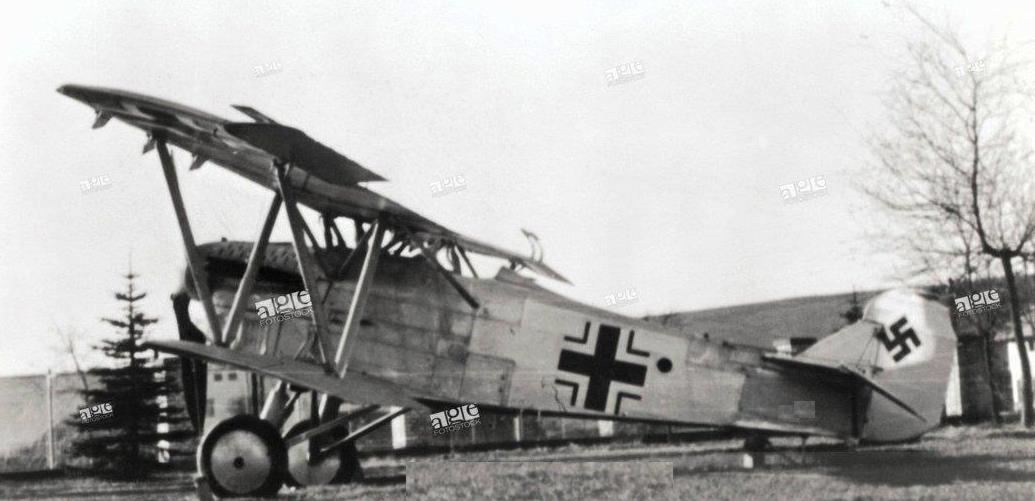
The new Fiat C.R. 20 pursuit airplane, with four machine guns, has the best military, aerodynamic, and static characteristics yet attained- It has an all-metal framework of steel and light metals. The surfaces are covered with fireproof fabric, which wears well without the disadvantages of very thin sheet metal. Exception is, of course, made of the front part of the fuselage in immediate proximity to the engine, which is covered with sheet duralumin.
The cell is of the sesquiplane type, rigidly braced, with a stagger of about 10°, both wings having a dihedral angle of 1° 20¹ The number of wing struts was made as small as possible, which reduces the structural drag and simplifies the mounting.
The ribs have a system of triangular bracing composed of duralumin tubes with walls 0-5 mm (0.02 in.) thick. The wing spars are in the form of box girders, consisting of two metal strips riveted together along two median lines- The two spar webs are suitably drilled according to the requirements of the distribution of the shearing stresses. The flanges extend the whole length of the spars and are reinforced at certain points-
The stresses are distributed in such a way as to require the least possible variation in the cross section of the spars.
Thus a girder of almost uniform strength is obtained. All the wing struts are made of sheet metal in the usual way, with an aspect ratio of 3.5, as commonly used on Fiat airplanes. The three struts forming each half of the cabane are joined in such a way as to leave the pilot's cockpit entirely free.
The fuselage framework consists of four steel longerons connected by triangular bracing and by a mixed system of transverse frames and brace wires. In the forward part, the fuselage structure may be said to terminate at the second bulkhead, it being possible to consider the rest as a projecting bracket. The engine mounting is thus reduced, to its simplest form- Especial care was taken to afford perfect accessibility to the magnetos, water, fuel, and oil pumps and other parts of the power plant.
No bracing being possible between the lower longerons on account of the fuel tank, the horizontal girders are continued through the lower wing joining this securely to the fuselage. The streamlined surface of the fuselage is obtained by means of duralumin ribs and tubes which directly support the fabric covering.
The honeycomb radiator occupies its logical position in the front end of the fuselage. It has special elastic supports, in order to avoid any possible disturbance due to vibrations. The air passages of the radiator are arranged so as to enable the maximum flow of air and hence the most efficient cooling while the airplane is climbing- The radiator is provided, with a shutter which can be operated by the pilot.
The engine is a 12-cylinder "V" Fiat A 20, with a normal HP. of 410 at 2100 R.P.M- The fine qualities of the airplane are due largely to the excellence of the engine, which represents the last word in engine building. The high speed of the airplane is due to the high revolution speed of the propeller whose efficiency is very high. The speed of the engine with direct drive renders it possible to attain a high specific power for a very small bulk. The front end of the engine is given a special shape in order to facilitate the installation of the radiator, which is still considered the best arrangement with respect to efficacy, weight, bulk and protection of the vulnerable parts from the enemy. The two double-spark, high-tension magnetos are situated behind the engine, so as to facilitate inspection by the crew. There is a special gasoline starter assisted by starting magnetos.
The armament consists of four machine guns, all located in the fuselage, - two, which fire through the propeller, being conveniently situated near the pilot. These two Vickers machine guns are installed in the usual way. The two light Darne machine guns are mounted on the two sides of the fuselage at the height of the longeron supporting the engine, in such a way as to enable the pilot to operate the triggers. The ammunition boxes are on the sides and under the engine cowling, suitably protected. The total ammunition consists of about 2000 cartridges-
Special attention was given the matter of visibility, the pilot being seated high with reference to the top of. the fuselage, thus affording him an good. field of vision both above and below the upper wing.
The whole airplane has such a compact form as to make the moment of inertia very small in all directions, thus giving it great maneuverability and enabling it to perform all kinds of acrobatic stunts- In order to avoid fire hazard in fighting, the fuel tank can be detached and dropped at the v/ill of the pilot. A fire wall separates the engine from the rest of the fuselage-
Nothing has been neglected to make it as safe as possible, so that its operation requires no special skill. It has a lateral dihedral of 1° 20' and a longitudinal dihedral of about 1° 30' The torque has been corrected by making the left half-cell longer than the right- Moreover, every couple of gyration has been abolished by a suitable orientation of the axis of traction, without causing drift- Special attention was given to, the disposition of the fuel and oil with respect to the vertical line passing through the center of gravity. Special attention was also given the location of the landing gear with respect to the center of gravity of the airplane, in order to lessen the tendency to capsize on rough ground.
The angle of attack is such as to give the airplane the maximum lift and therefore to reduce the landing speed to the minimum.
The greatest advantages of this airplane consist, however, in its large carrying capacity (useful load), large safety factor, high horizontal and climbing speed, which have never been previously attained by airplanes of this type. Their attainment is due, in part, to the careful design of the airplane from the aerodynamic viewpoint and, in large part, to the exceptional excellence of the Fiat A 20 engine. The flight safety is fully guaranteed by the very high safety factor.
Official Tests of the Fiat C.R. 20 Pursuit Airplane
At Montecelio in the latter part of September, 1926, the Fiat C.R. 20 underwent its official tests, which resulted in the determination of the following performances-'
Climb to 5000 m (16,400 ft.) 13 min. 30 sec.
to 6000 m (19,630 ft ) 18 min 40 sec.
Speed near ground 280 km/h
" at 3000 m ( 6560 ft.) 272 km/h
" at 5000 m (16,400 ft ) 251 km/h
at 6000 m (19,680 ft ) 240 km/h
Landing speed, with full load 90 km/h
Landing run, 210 m
Take-off run 165 m
The Fiat C.R. 20, piloted by Bottala, performed with remarkable facility, a series of loops, rolls, spins, Immermann turns. etc., to the admiration of those present at the official tests. The high safety factor of 16, attained by the Fiat C.R. 20, clearly demonstrates the superiority of metal construction, when carefully studied out, over wood or mixed construction.
The new Fiat engine has already been described in "L'Ala d'Italia," for March, 1926, pp. 95-98. The adoption of this engine demonstrates that Italian engine construction, after a period of inactivity, has regained the supremacy. Its maneuverability, the responsiveness and ease of operation of its controls, and its perfect equilibrium in flight have caused it to be well received by our pursuit pilots.
Characteristics
Span, 32.1 ft.
Length, 21.6 ft
Height, 8.9 ft
Wing area, 278.0 cu.ft.
Weight empty, 2072.0 lb.
Useful load, 936.0 lb
Total weight, 2998.0 lb
Gasoline and oil. 485.0 lb
Military or commercial load 265.0 lb
Pilot, 176.0 lb
Wing loading, 10.8 lb./sq.ft.
Power loading 7.5 lb./HP.
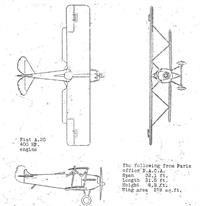
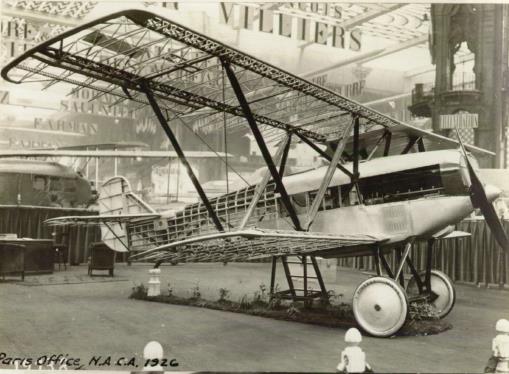
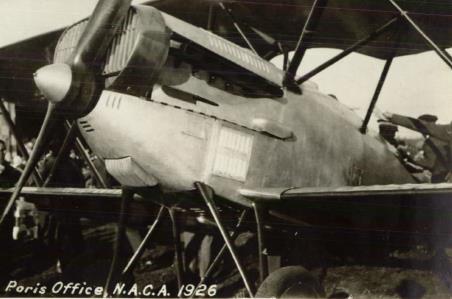

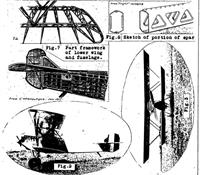
Lithuania : Captured by the Germans in June/July 1941 - seven aircraft. Three usable, 4 damaged. Probably not used by the Germans. Known code WL-IELV = D-IELV
| Type |
bis, Single seat fighter |
B. Two seat trainer and Communication aircraft |
| Engine |
1 Fiat A 20 or A 20AQ, prop. dia. 2,50 m |
| Dimensions |
Length 6,71 m, height 2,79 m, span 9,80 m,lower wing 6,82 m, wing area 25,65 m2 |
|
| Weights |
Empty 970 kg, loaded 1390 kg |
|
| Performance |
Max speed at sea level 250 km/h, at 4000 m 263 km/h, landing speed 105 km/h, climb to 1000 m 2 min., 2000 m 4 min, 35 sec., to 3000 m 8 min., to 4000 m 11 min. 40 sec., to 5000 m 18 min., to 6000 m 26 min., max. altitude 7500 m, max. endurance 2 h 30 min. |
|
| Armament |
2 7,7 mm Vickers, F.I.A.T.-Revelli or Breda-S.A.F.A.T. machine guns |
|
| Aircraft taken over from Austria 1938 |
| Type |
Werk.Nr |
Registration |
History |
| bis |
423 |
13, A-204 |
To Zeugamt Erding, scrapped |
| bis |
424 |
14, A-205 |
To Zeugamt Erding, scrapped |
| bis |
427 |
15, A-206 |
To Zeugamt Erding, scrapped |
| bis |
421 |
16, A-53, A-207 |
|
| bis |
394, 2259 ? |
17, A-209, MM2349 |
To Zeugamt Erding, scrapped. The Werk.Nr is ? |
| bis |
2340 |
18, A-210, RT+AU, MM2340 |
To Zeugamt Erding, scrapped. The Werk.Nr. is ? |
| bis |
289, 2163 |
19, A-211, MM2163 |
|
| bis |
2363 |
110, A-212, MM2341 |
|
| bis |
2357 |
111, A-213, MM2363 |
|
| bis |
|
112, A-214, MM2357 |
|
| bis |
|
113, OE-MAE ?, MM2150 |
To Ausbildungsregiment 24, Klagenfurt |
| bi |
280 |
114, OE-MEE, MM2154 |
|
| bis |
263 |
115, OE-MIE, MM2004 |
|
| bis |
292 |
116, OE-MOE, MM2304 |
|
| bis |
|
117, MM2157 |
To Zeugamt Erding, scrapped |
| bis |
|
118, MM2294 |
|
| bis |
|
119, MM2310 |
|
| bis |
|
120, MM2349 |
To Ausbildungsregiment 24, Klagenfurt |
| bis |
|
126, MM1973 |
To Ausbildungsregiment 24, Klagenfurt |
| bis |
|
121, MM2159 |
To Zeugamt Erding, scrapped |
| bis |
|
123, MM2375 |
To Zeugamt Erding, scrapped |
| bis |
201 |
127, MM1942 |
|
| bis |
203 |
128, MM1944 |
To Ausbildungsregiment 24, Klagenfurt |
| bis |
217 |
129, MM1958 |
|
| bis |
284 |
130, MM2158 |
To Ausbildungsregiment 24, Klagenfurt |
| bis |
297 |
131, MM2253 |
|
| bis |
306 |
132, MM2262 |
To Ausbildungsregiment 24, Klagenfurt |
| bis |
338 |
133, MM2334 |
To Ausbildungsregiment 24, Klagenfurt |
| bis |
405 |
134, MM2351 |
To Zeugamt Erding, scrapped |
| B |
143 |
11, A-202 |
To Zeugamt Erding, scrapped |
| B |
1803 |
12, A-203, MM1803 |
|
| B |
|
124, MM1764 |
|
| B |
|
125, MM1833 |
|









